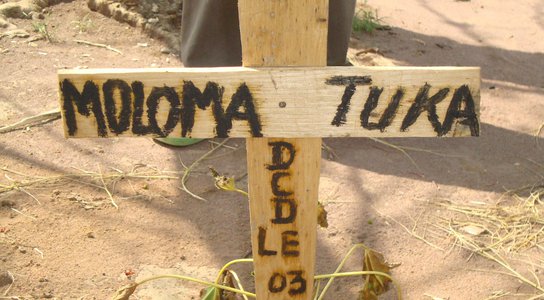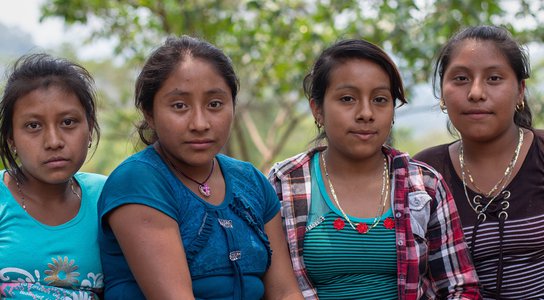Para la versión española, clique aquí.
The recent police killings of four anti-mining protesters in Peru highlights the problems caused by the country's weakening of environmental safeguards and its dangerous crackdown on civil society, says campaign group Global Witness.
The killings are part of a trend in Peru that Global Witness exposed, in its November 2014 report Peru’s Deadly Environment. The report showed how 73% of the 57 killings of environmental and land defenders between 2002-2014 happened at the hands of state and private security forces, mostly related to protests against extractive sector projects.[1] With these four killings that brings the death toll to 61.
In the run up to the flagship UN Climate Conference in Paris, the deaths of the four protesters remind the world that Peru has a lot to do to live up to its human rights and environmental aspirations.
Peru must urgently hold those responsible for these killings to account. By ignoring environmental concerns over mining projects Peru’s government is provoking increasingly bloody conflicts with local communities, and harming its environment, at the expense of its climate change obligations - Chris Moye, campaigner with Global Witness.
Global Witness is also calling for Peru to protect peaceful protesters as set out in the UN Declaration on Human Rights Defenders and the Organisation of American States’ resolution on human rights defenders.
The reported use of lethal force by the police against the community protesters in the Region of Apurimac, comes off the back of the passage of law 30151, which impacts on the right to peaceful protest by granting members of the armed forces and the national police exemptions from criminal responsibility if they cause injury or death while carrying out their duties[2]. Global Witness is calling for this law to be revoked.
The crisis in Peru’s mining sector has also been catalysed by the recent passage of Law 30230 approved in July last year.[3] The law cuts back on environmental safeguards, like the time designated for the evaluation of Environmental Impact Assessments, in order to stimulate more investment in the extractive sector[4]. In the case of the Apurimac protests against the Las Bambas mine, owned by Chinese company MMG, communities were specifically protesting against changes to the project’s Environmental Impact Assessment which they weren’t consulted on[5] [6].
/ ENDS
Contacts
Notes to editor:
[1]Global Witness, Peru’s Deadly Environment (14 November 2014).
[2]Global Witness, Peru’s Deadly Environment (14 November 2014).
[3]SPDA, Congreso aprobó paquete de medidas para la reactivación de la economía (3 July 2014). Available from: http://www.actualidadambiental.pe/?p=26310.
[4]http://www.minem.gob.pe/minem/archivos/file/Mineria/LEGISLACION/2014/JULIO/LEY30230.pdF Comision Permanente del Congreso de la Republica, Ley No 30230 (June 2014).
[5]El Comercio, Las Bambas (29 September 2015): confirman que son 4 muertos por enfrentamientos, Esta mañana se registró un nuevo enfrentamiento, manifestantes quemaron una garita de control. Available from: http://elcomercio.pe/peru/apurimac/bambas-confirman-que-son-4-muertos-enfrentamientos-noticia-1844644.
[6] The four local community members were killed by gunshots from policemen during widespread community protests in the Region of Apurimac, against one of the largest copper mines in Peru and in the world, operated by MMG Limited. A further 23 people have been reported injured in the clashes, including 15 civilians and 8 policemen.
While Peru paints a progressive image of its environmental credentials, by committing to conserve 54 million hectares of its forests and reduce to zero deforestation by 2020, as part of its climate change mitigation commitments, the reality on the ground is increasing environmental degradation, and intensifying conflict with indigenous and local communities affected by extractive sector projects that affect their forests. In Madre de Dios for example, the Carnegie Institution for Science and Stanford University found that the extent of illegal mining impacting on primary forests in that Region expanded from less than 10,000 hectares in 1999 to more than 50,000 ha as of September 2012, with devastating consequences for local environments and communities. Clearance of forest accounts for almost fifty per cent of Peru’s greenhouse gas emissions[1]. Meanwhile, Peru’s Human Rights Ombudsman documented 1935 social conflicts generated by opposition to mining projects over the period 2006 to 2014. Many of these protesting communities have over 20 million hectares of pending land title requests as yet unanswered by the State.
You might also like
-
Report Peru's Deadly Environment
As Peru prepared to host the 2014 UN climate talks, four murders in its Amazon were tragic reminders of a paradox at work in Peru’s forest sector.
-
Report Deadly Environment
A rising death toll on our environmental frontiers is escaping international attention.
-
Campaign Land and environmental defenders
Land and environmental defenders play a crucial role in protecting their land - and our climate - against destructive business practices.